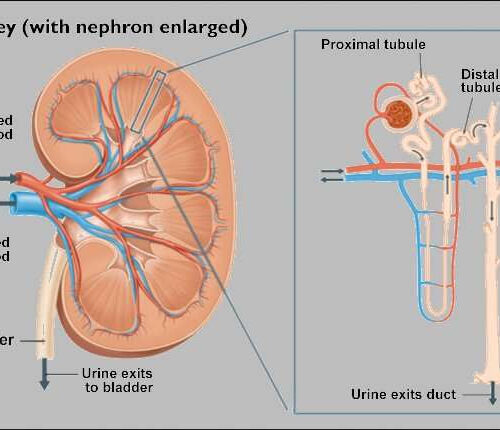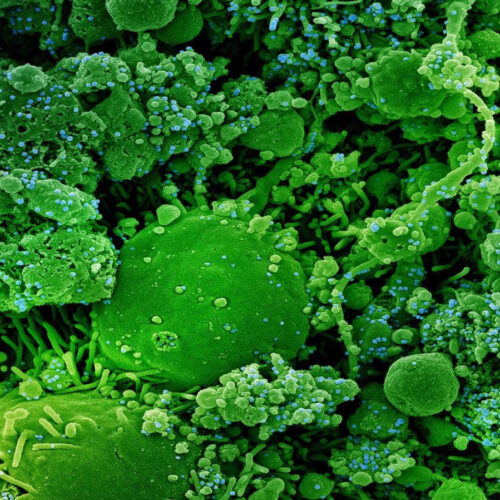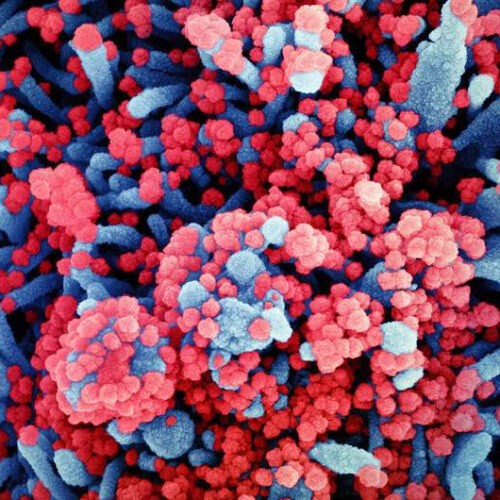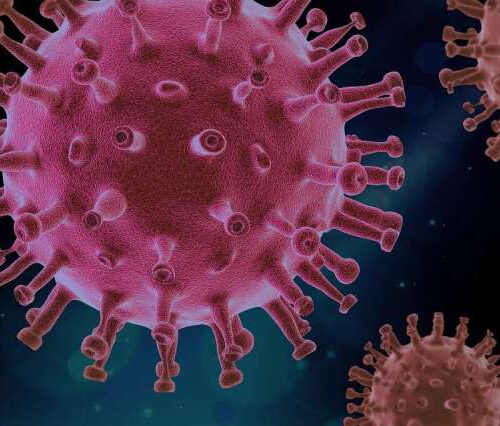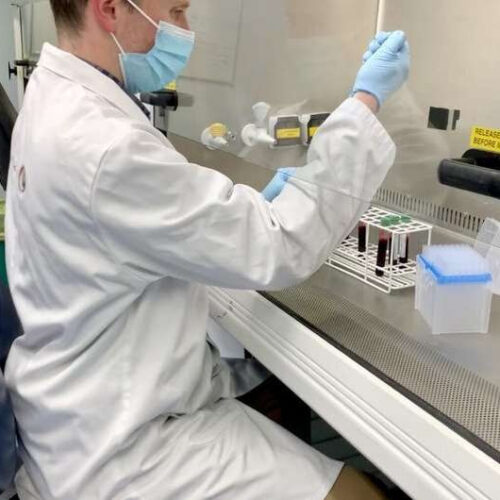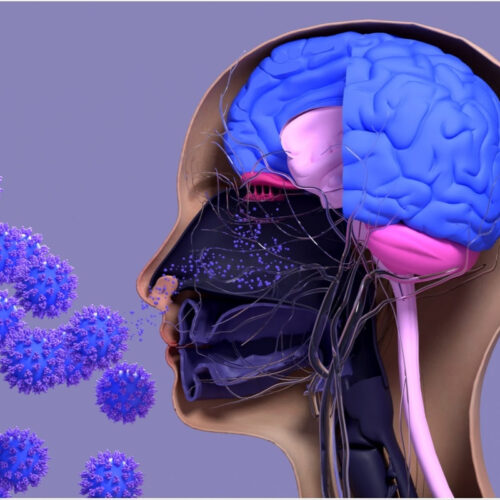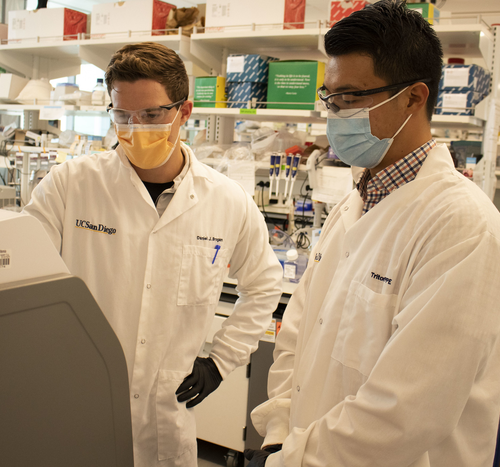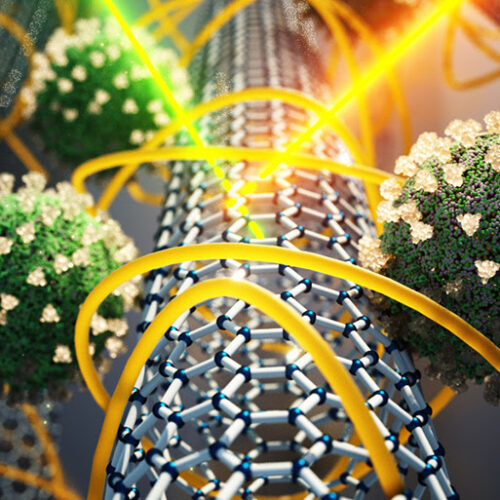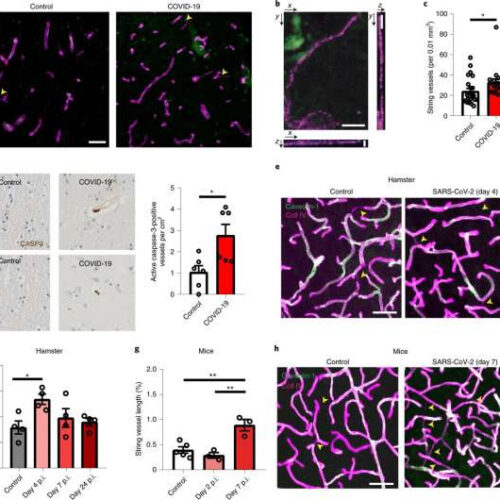by University of Washington School of Medicine COVID-19 was found to directly invade proximal tubule cells in kidney organoids. Credit: National Institute of Diabetes and Digestive and Kidney Diseases Up to 25 percent of patients’ COVID-19 cases involve acute kidney injury—the kidneys’ equivalent of a heart attack. Clinicians have suspected that such injuries are a...
Tag: <span>SARS-CoV-2</span>
SARS-CoV-2 Omicron variant: What we know so far
By Benedette Cuffari, M.Sc.Nov 28 2021 Reviewed by Danielle Ellis, B.Sc. On November 24, 2021, the severe acute respiratory syndrome coronavirus 2 (SARS-CoV-2) Omicron (B.1.1.529) variant was first reported to the World Health Organization (WHO) from South Africa. The Omicron variant has joined several other SARS-CoV-2 variants as a variant of concern (VOC), which indicates...
Exposure to harmless coronaviruses boosts SARS-CoV-2 immunity
by University of Zurich Colorized scanning electron micrograph of a cell (blue) heavily infected with SARS-CoV-2 virus particles (red), isolated from a patient sample. Image captured at the NIAID Integrated Research Facility (IRF) in Fort Detrick, Maryland. Credit: NIAID The population’s immunity to SARS-CoV-2, achieved either through infection or vaccination, is crucial to overcome the COVID-19...
SARS-CoV-2 infection could cause alterations in pain perception
by Hôpitaux Universitaires de Genève Credit: Pixabay/CC0 Public Domain Physicians from the Geneva University Hospitals (HUG) have observed a surprising phenomenon during the second wave of the COVID-19 pandemic: Some patients with cancer-related pain have experiences a significant decrease or even disappearance of pain perception during the acute phase of infection. This case study would confirm the...
Single blood test to measure T-cell and antibody response to SARS-CoV-2
by Cardiff University Dr. Martin Scurr carrying out the test. Credit: Cardiff University A test to measure both the T-cell and antibody response to SARS-CoV-2 in a single blood sample has been developed by scientists at Cardiff University. The unique approach can also be used to measure the immune response brought about by vaccination and previous infection. It...
Repurposing a familiar drug for COVID-19
by Catherine Caruso, Harvard Medical School Credit: Unsplash/CC0 Public Domain For the past year and a half, the COVID-19 pandemic has continued to engulf the globe, fueled in part by novel variants and the uneven distribution of vaccines. Every day, hundreds of thousands of new COVID-19 cases and thousands of new deaths are still being reported...
SARS-CoV-2 leaves long-term impact on olfactory neurocircuit
By Dr. Liji Thomas, MDReviewed by Danielle Ellis, B.Sc. The severe acute respiratory syndrome coronavirus 2 (SARS-CoV-2) emerged in December 2019 to cause more than 200 million documented infections and five million deaths. Among the earliest and most characteristic symptoms is olfactory dysfunction due to involvement of the olfactory epithelium (OE). A new preprint shows the...
Researchers develop CRISPR-based rapid diagnostic tool for SARS-CoV-2
UNIVERSITY OF CALIFORNIA – SAN DIEGO IMAGE: STUDY LEAD AUTHOR DAN BROGAN (LEFT) AND COAUTHOR CALVIN LIN REVIEW RESULTS FROM A SENSR REACTION USING A LIGHT CYCLER QPCR MACHINE. CREDIT: MICHELLE FREDRICKS, UC SAN DIEGO Blending experts from molecular genetics, chemistry, and health sciences, researchers at the University of California San Diego have created a...
Carbon Nanotube Sensor Detects SARS-CoV-2 Within 5 Minutes
OCTOBER 27TH, 2021, CONN HASTINGS Scientists at MIT announced the development of a rapid COVID-19 test that can detect the virus in a saliva sample in as little as five minutes. The technology does not require antibodies or other expensive reagents typically associated with protein detection, and is instead based on carbon nanotubes. The nano-structures...
Evidence suggests SARS-CoV-2 virus attacks brain endothelial cells
by Bob Yirka, Medical Xpress Fig. 1: SARS-CoV-2 infection is associated with increased string vessels in the brain. a–c, In the brains of SARS-CoV-2-infected patients, empty basement membrane tubes, also known as string vessels (arrowheads), were increased in the frontal cortex. Sections were stained for the basement membrane marker collagen IV (coll IV) and the...

